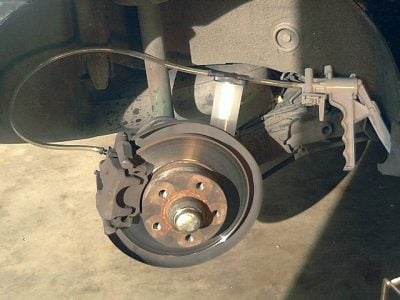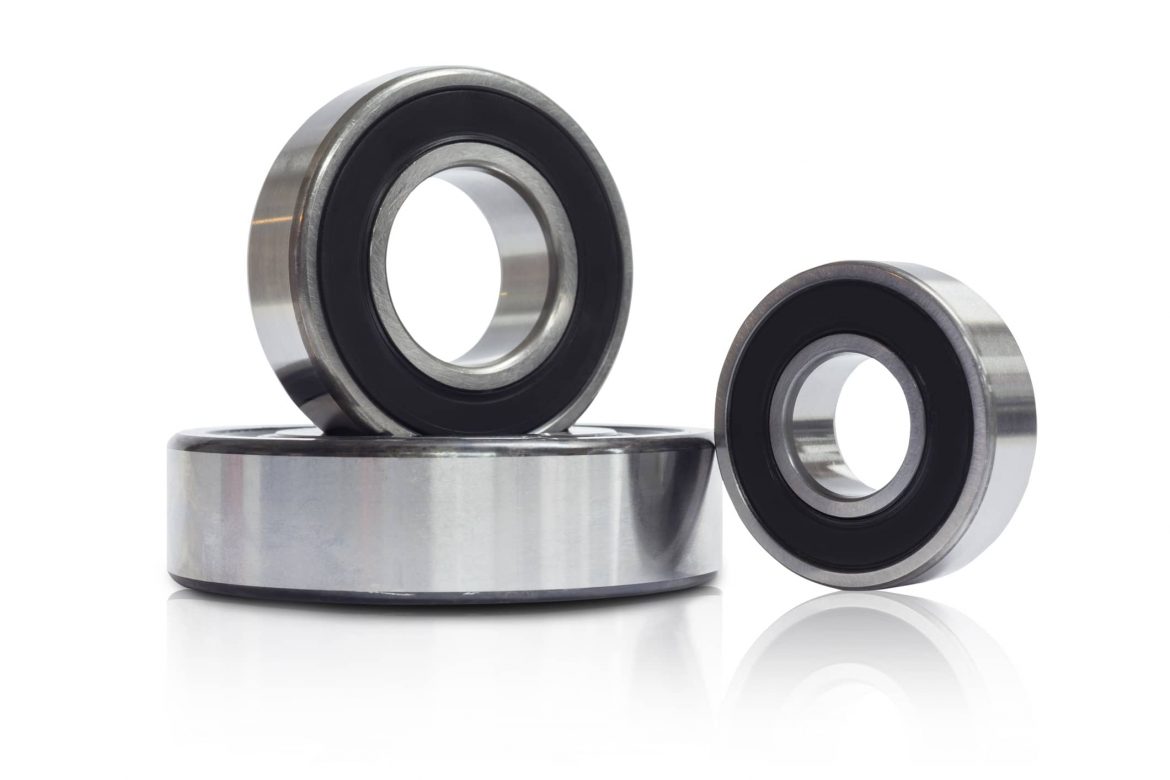Keeping the brakes on your vehicle working correctly is one of the most important things you can do to keep you and your family safe. Sure, if your car breaks down it is an inconvenience, but nothing is scarier than to press on the brake pedal and have your car not slow down.
How does the brake system work?
The brake system on your vehicle is a relatively simple system designed to work in extreme conditions and not fail. There is a hydraulic cylinder that is connected to your brake pedal. When you push the brake pedal this hydraulic cylinder forces brake fluid through the lines and down into the piston in your disk brake calipers or drum brake wheel cylinders. The fluid pressure forces those cylinders to actuate engaging your brakes and cause your brake pads or brake shoes to slow your vehicle down through friction.
One of the ways your brake system can fail is if it gets air inside the brake lines. Air can be introduced into the system through a leak, poorly completed maintenance, or by having too low of a brake fluid level. If air gets into your brake system it can cause your brake pedal to feel softer, or easier to press. It can also make it take longer for your vehicle to stop. This happens because the air is actually compressing inside your brake system when you push the brake pedal rather than the piston in your brake caliper moving. This reduces your braking force and can be a dangerous situation.
How do I bleed brakes?
To return your brake system to normal operation, you need to remove the air from the brake lines. This can be done by either forcing new brake fluid into the line pushing the air out, or by drawing the old brake fluid out through the caliper which will bring the air with it. To force new brake fluid into the line, start by making sure the brake fluid reservoir is full of fresh fluid. Start by pumping the brake pedal a few times until it gets firm, then hold pressure on it. Have a friend open the bleeder valve at one of the brake calipers or wheel cylinders. As fluid is pushed out you should feel the brake pedal moving toward the floor. As the brake pedal gets close to the floor, have your friend quickly close the bleeder valve. Make sure to not let the brake pedal back up until the valve is closed otherwise you will draw air into your brake system through the bleeder valve rather than drawing new fluid into the system from the reservoir. Repeat this process until you don’t see any air bubbles coming from the bleeder valve. Make sure to keep the brake fluid reservoir full during this process or you will introduce more air into the braking system. You may have to repeat this process as many as 10 or 15 times on each caliper or wheel cylinder.
 The other option is to draw the brake fluid and air bubble through the brake line. This can be done with one person using a vacuum pump. Again, make sure the brake fluid reservoir is full then attach your vacuum pump to the bleeder valve using a clear hose. Open the valve and begin to operate the vacuum pump. This will draw brake fluid from the reservoir down through the lines and the air bubble out with it. You can operate the vacuum pump until you don’t see any more air bubbles. You again must do this for all four wheels.
The other option is to draw the brake fluid and air bubble through the brake line. This can be done with one person using a vacuum pump. Again, make sure the brake fluid reservoir is full then attach your vacuum pump to the bleeder valve using a clear hose. Open the valve and begin to operate the vacuum pump. This will draw brake fluid from the reservoir down through the lines and the air bubble out with it. You can operate the vacuum pump until you don’t see any more air bubbles. You again must do this for all four wheels.
If after bleeding all four brakes you still have a soft pedal feel it is possible that your brake master cylinder needs to be replaced. Brake fluid can absorb water over time causing it to become corrosive. This can corrode the inside of your brake master cylinder causing it to not pressurize the brake lines when you press the brake pedal and your brakes to fail, giving you a similar soft pedal feel.
If you experience any problems with your braking system it is important to take care of them right away to make sure your vehicle is safe for you and those on the road around you.
BlueDevil Products can be found on Amazon.com or at AutoZone, Advance Auto Parts, O’Reilly Auto Parts, NAPA, and other major auto parts retailers.
4 responses to "How to Bleed Brakes"
4 Comments
Leave a Reply
Related Articles




I have a 2002 Ford Ranger. The brakes work well after 30 seconds or so, but I cannot drive off after just starting the vehicle because there doesn’t seem to be enough pressure in the brake lines. It takes a lot longer to stop the truck at first start. Also, I need to apply more pressure to get the vehicle to finally stop. Could this be air in the lines or something bigger? I find it strange that it’s only this way after just starting, but then builds enough pressure and is fine.
Caleb-
Thanks for your question about your 2002 Ranger. It does sound like it is possible that you have air in your brake lines. The most common way for this to happen is that you have a low brake fluid level so start by checking that. If the level is low, we recommend topping it off and bleed all 4 brakes.
The other possible problem is that you have a broken or loose vacuum line going to your brake booster. Your truck uses the engine vacuum to assist and add braking power. If the vacuum line is loose or has a hole in it, it could decrease the braking power and cause the problems you are describing. There should be a rubber hose ¼” to ½” in diameter running from your engine to the brake booster housing. Check that for a good connection and any holes or cracks.
-BDP
My breaks hiss at me when I push them try to stop and don’t have good breaks. Could that be air in the lines or the break booster giving out
Seth-
If you are hearing a hissing sound when applying or releasing the brakes, it could be an indication of the brake booster leaking air. We recommend having the brake booster looked at for possible replacement.
Thank you!
-BDP